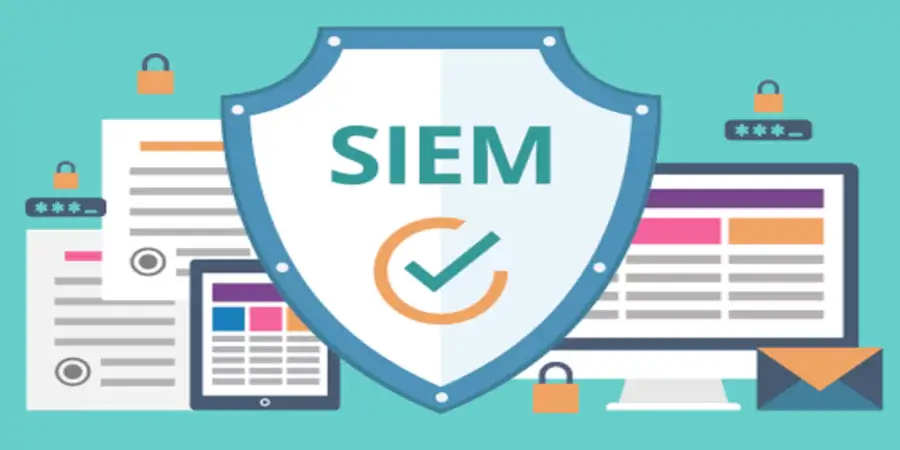Key Takeaways:
- SIEM systems present different cost factors, from initial setup to ongoing maintenance.
- Understanding the cost breakdown can assist in creating a well-informed security infrastructure budget.
- Analyzing various pricing models helps organizations choose a SIEM solution that fits their financial and operational needs.
Introduction to SIEM Costs
Security Information and Event Management (SIEM) systems have become a cornerstone of modern cybersecurity strategies. As organizations increasingly rely on digital infrastructure, understanding how SIEM works is crucial for efficiently managing security risks. These systems provide comprehensive, real-time monitoring and analysis of security alerts, generated by hardware and software solutions in the network. However, while robust, SIEM solutions come with various costs that organizations need to plan for. These expenses can impact budgets significantly, especially if not anticipated correctly.
The financial commitment to SIEM lies in a spectrum that spans from the initial setup to ongoing maintenance and management. Factors such as the organization’s size, specific security needs, and the complexity of the IT infrastructure all play critical roles in determining the cost. Organizations can make informed decisions by exploring the different components contributing to the overall cost, ensuring that their security investments are aligned with business objectives without causing financial strain.
Initial Investments
The initial investment required to deploy a SIEM system is often substantial and includes several critical components. First and foremost, organizations must establish a comprehensive baseline by purchasing the SIEM technology, which often represents a major portion of the initial expenditure. Beyond buying the technology, costs related to deploying the infrastructure, integrating the system within existing security frameworks, and initial configuration must be considered.
Additional expenses may include upgrading hardware or purchasing supplementary software to enhance SIEM system performance. These costs increase proportionally based on the size and complexity of the network architecture. Planning these initial financial outlays carefully is crucial, as they lay the groundwork for building a robust security infrastructure capable of addressing the threats unique to each organization.
Ongoing Costs
Once the SIEM system is up and running, organizations face ongoing costs that must be accounted for in annual budgets. These recurrent expenses include subscription fees, licensing renewals, support contracts, and possibly additional data storage capacity charges. As the volume of data managed by SIEM systems can be massive, the cost for expanding storage solutions can be significant, especially as organizations grow.
Maintaining a team of skilled professionals is crucial for effectively operating SIEM systems. Employee salaries and training costs to ensure staff remain knowledgeable about the latest threats and system capabilities contribute further to these ongoing expenses.
Different Pricing Models
SIEM providers typically offer a variety of pricing models that provide flexibility aligned with an organization’s financial and operational capacities. Common approaches include perpetual licensing, subscription-based services, and consumption-based pricing. Each model has distinct pros and cons that need careful consideration, such as the predictability of costs versus the scalability of services.
For instance, subscription models can facilitate more manageable and predictable spending with regular, fixed payments, making it easier to budget. On the other hand, consumption-based pricing offers scalability and cost alignment with actual usage, allowing cost optimization as organizational needs fluctuate. Choosing the ideal pricing model requires a clear understanding of the organization’s IT infrastructure, data utilization, and long-term security commitments.
Identifying Hidden Expenses
Beyond apparent costs, SIEM systems often come with hidden expenses that can impact financial planning if not identified early. These surprises may involve unforeseen requirements such as additional data storage, need for hiring consultants for expert advice, or changes in scaling needs that necessitate further investment. Moreover, organizations should consider the potential downtime costs during the initial deployment phases, which could disrupt operations and incur financial penalties.
Anticipating these hidden costs demands a comprehensive due diligence process, which involves close collaboration with SIEM vendors to uncover additional potential expenses. This not only prevents budget overruns but also helps craft a more precise and dependable financial projection for the SIEM deployment.
Evaluating Cost-Benefits of SIEM
Implementing a SIEM system goes beyond mere budgetary considerations. The key lies in understanding the cost-benefit ratio and how effectively these systems enhance security operations. While upfront and recurring expenses can be substantial, the long-term benefits—such as improved threat detection capabilities, better regulatory compliance, and enhanced incident response—can justify these investments.
A report from ZDNet illustrates the additional value these systems provide by streamlining IT operations and optimizing risk management protocols. Efficient deployment of SIEM solutions can significantly improve operational efficiency, providing an effective layer of defense against the evolving threat landscape.
Strategies for Cost Minimization
Organizations can employ several strategies to minimize expenses and navigate the complexities of SIEM costs. Negotiating flexible and favorable pricing terms with providers is a practical start, ensuring that agreements are aligned with actual usage and business growth trajectories. Optimizing existing infrastructure can also facilitate a seamless SIEM integration process, potentially reducing the reliance on external resources.
Continuous staff training can diminish costs by building internal expertise, reducing the need for costly consultants. Additionally, conducting regular audits ensures the SIEM system’s efficiency, allowing organizations to maximize their investment’s value while maintaining robust security defenses.
Conclusion
Understanding the comprehensive costs associated with SIEM systems is crucial for any organization embarking on a cybersecurity enhancement initiative. By dissecting visible and hidden expenses, organizations can construct well-rounded budgets that justify the significant investment required for a SIEM deployment.
Effective planning, strategic investments, and alignment with business goals not only secure financial resources but provide a formidable defense against cyber threats. As organizations adapt to an ever-changing digital landscape, SIEM systems offer the tools to protect valuable data, maintain operational integrity, and ensure long-term resiliency.















